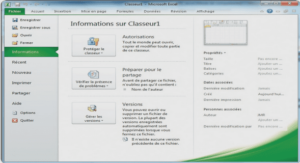Review of existing measurement methods and systems
Sound level meter and noise level meter
A sound level meter is a device used for acoustic measurements to assess noise or sound levels by measuring the sound pressure with a microphone. It is often referred to as a sound pressure level (SPL) meter, decibel (dB) meter, noise meter or noise dosimeter. A noise dosimeter is normally a wearable and portable device aimed to measure personal noise exposure for occupational purposes at workplace. The measured level must then comply with Health and Safety regulations.
Such devices are able to measure and store sound pressure levels (SPL) and process them over time in order to provide a cumulative noise-exposure reading for a specific period of time, which is a working day or week.
With sound level meters, industrial hygienists and workplace safety professionals can measure sound pressure levels in multiple locations to ensure that environmental conditions don’t go beyond the recommended exposure limits (REL). Some sound level meter devices can be permanently installed for continuous monitoring of sound pressure levels at a workplace. On the other hand, dosimeters are generally placed on the shoulder for practical reasons and positioned relatively close to the worker’s ear. Results from technique make clear that it is only valid if subjects do not move too much in front the source or if the acoustic field is sufficiently diffuse.
These instruments are specified by different standards and techniques, derived from International Organization for Standardization (ISO) like the IEC 61672-1:2002 (IEC (2002)).
There are many considerations to take into account when selecting the right equipment. For instance the type and class, give indication of the accuracy of the equipment as specified by the American National Standards Institute (ANSI (1996)) or International Electrotechnical Commission (IEC (2002)) guidelines. Also, the type of measurements to be made (impulse vs steady noise, high levels, etc.) will also influence the selection of the equipment.
Sound level meters and dosimeters are divided in two classes per IEC standard. Instruments from class 1 have a wider frequency range and a tighter tolerance than a lower cost, class 2 units. Class 1 instruments are mostly used for research and law enforcement. Similarly, ANSI specifies sound level meters as three different Types 0, 1 and 2.
These are described per Occupational Safety and Health (OSHA (2019a)) and it defines the performance and accuracy tolerances according to three levels of precision: Types 0, 1, and 2. The first one (Type 0) is used in laboratories, Type 1 is used for precision measurements in the field and Type 2 is used for general-purpose measurements.
In terms of precision, ANSI Type 2 sound level meters and dosimeters are considered to have an accuracy of ± 2 dB(A), while a Type 1 instrument has an accuracy of ± 1 dB(A). The minimum requirement by OSHA for noise measurements is the Type 2 meter and is normally adequate for general purpose noise surveys. The Type 1 meter is preferred for the design of cost-effective noise control solutions.
The way noise measurements are normally conducted with SLMs is by positioning the instrument in the center level position of the worker’s head, but without the presence of that one. In fact the presence of the worker (head, body, shoulder, etc.) can cause some unwanted effects in the measurement such as sound absorption, diffraction and reflections and may fail to account for the device’s placement effects and inter-individual differences in the wearers’ ear geometries, which can greatly complicate the near acoustic field and therefore compromises the measure.
A conventional SLM is able to make instantaneous noise measurements only. It is very practical for places with continuous noise levels but not efficient for workplaces with impulse, intermittent or variable noise levels, therefore making hard to evaluate an average exposure to noise over a work shift a worker is submitted.
SLMs with time integration capabilities (most modern SLMs have these capabilities) are also called Integrating Sound Level Meters (ISLM). They can be used to to provide the Leq,t as the time integration can be done automatically by the device. It must comprise the A-weighting factor since IEC 61672-1:2002 (IEC (2002)) mandates the inclusion of an A-frequency-weighting filter in all sound level meters.
Since time-integrated levels can be obtained, ISLM is very similar to the dosimeter and is used for determining the equivalent sound level over a defined period of time. A substantial difference is that an ISLM does not provide personal exposure because it is hand-held, and not intended to be worn attached to the body. The ISLM provides the equivalent sound levels at a specific location and it provides a single reading of a given noise, even if the current noise levels changes continually. It generally makes use of a user-defined exchange rate and time integration constant.
Personal noise dosimeters
In order to overcome those problems mentioned above concerning SLM devices, one solution is to use a noise dosimeter. A noise dosimeter is a small and lightweight device equipped with a microphone and attached to the worker’s body. Typically, it is attached to worker’s shoulder, close to the ear. It acquires and process the noise data in a continuous manner, providing the an averaged number, the Leq,t. It is suitable for places where the noise substantially varies in intensity and duration and time span and/or when the worker moves constantly. A noise dosimeter allows to measure the noise exposure of a worker per requirements of CFR 1910.95 (OSHA (2019b)) or EU Directive 2003/10/EC (EU-OSHA (2003)). As the SLM devices, noise dosimeters have also to meet specifications defined by OSHA (2019a) and IEC (2002). Noise dosimeters can be set with some parameters like criterion level, exchange rate and threshold level.
INTRODUCTION |





